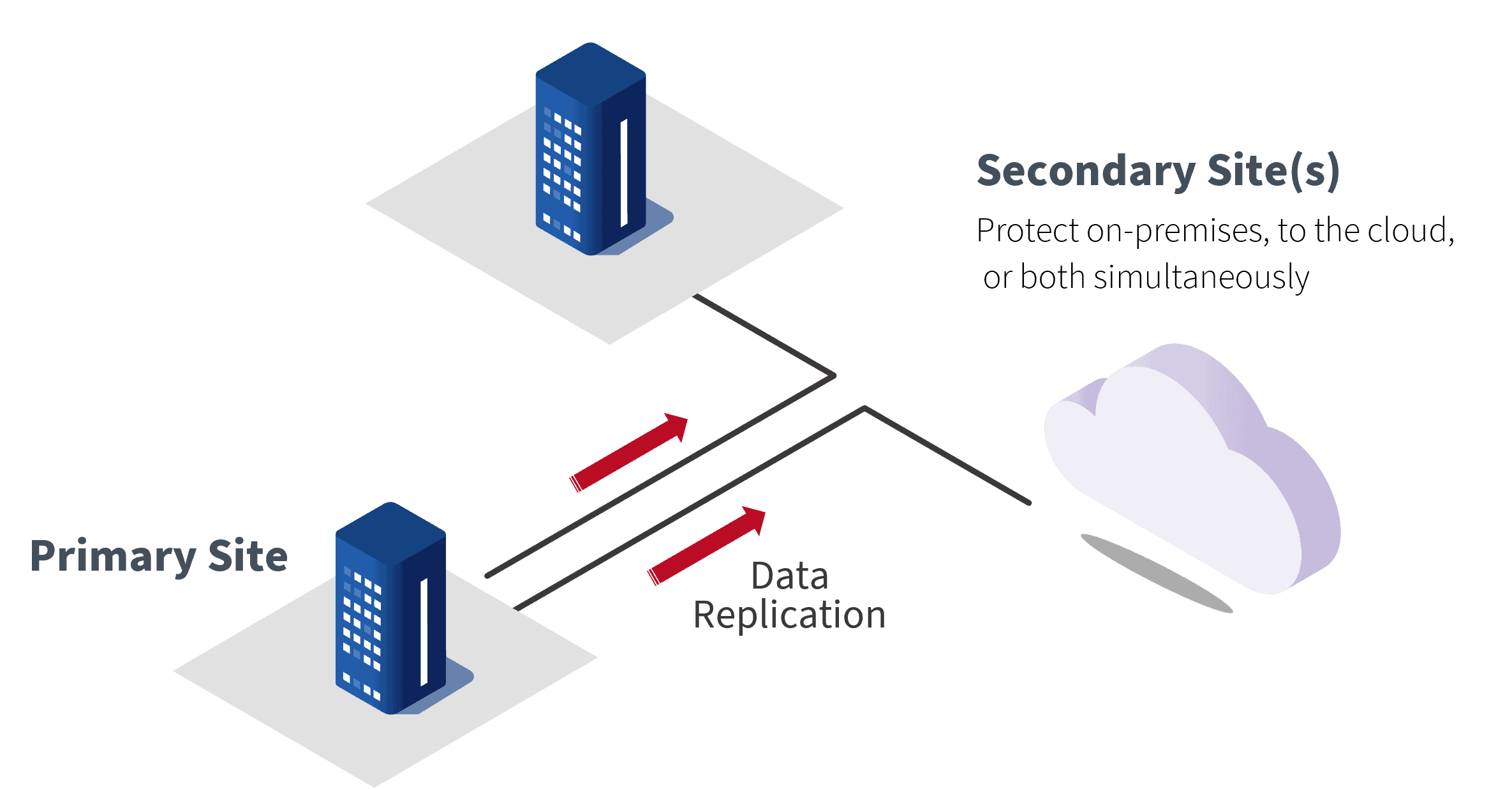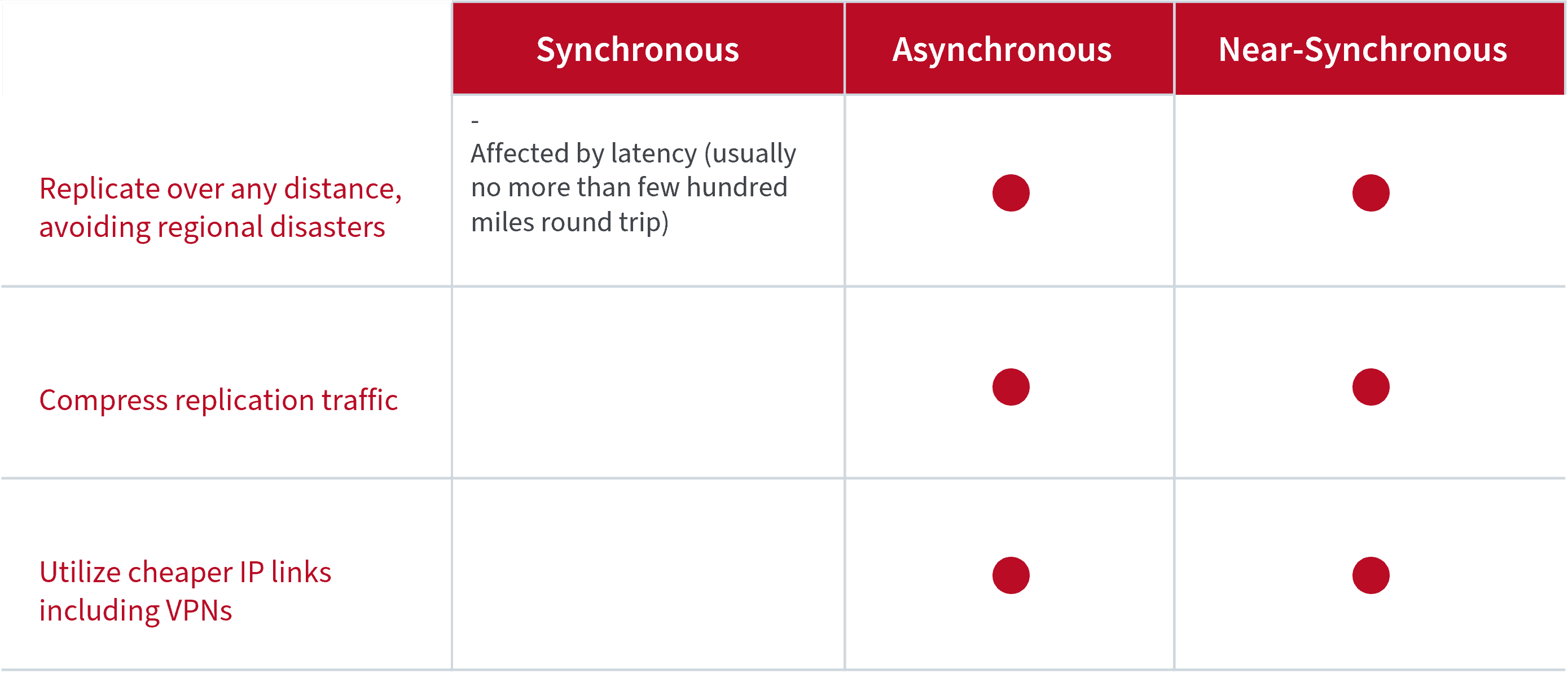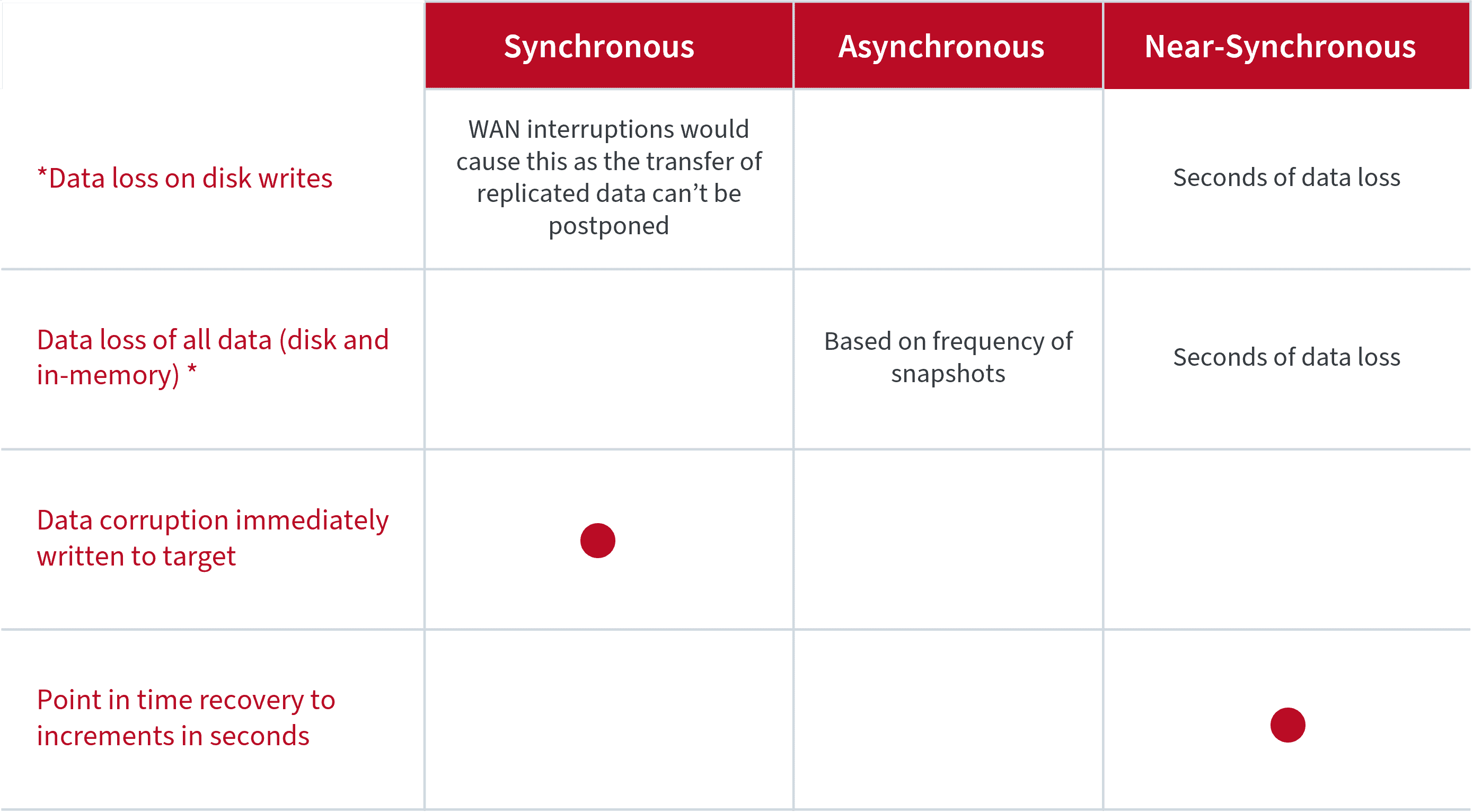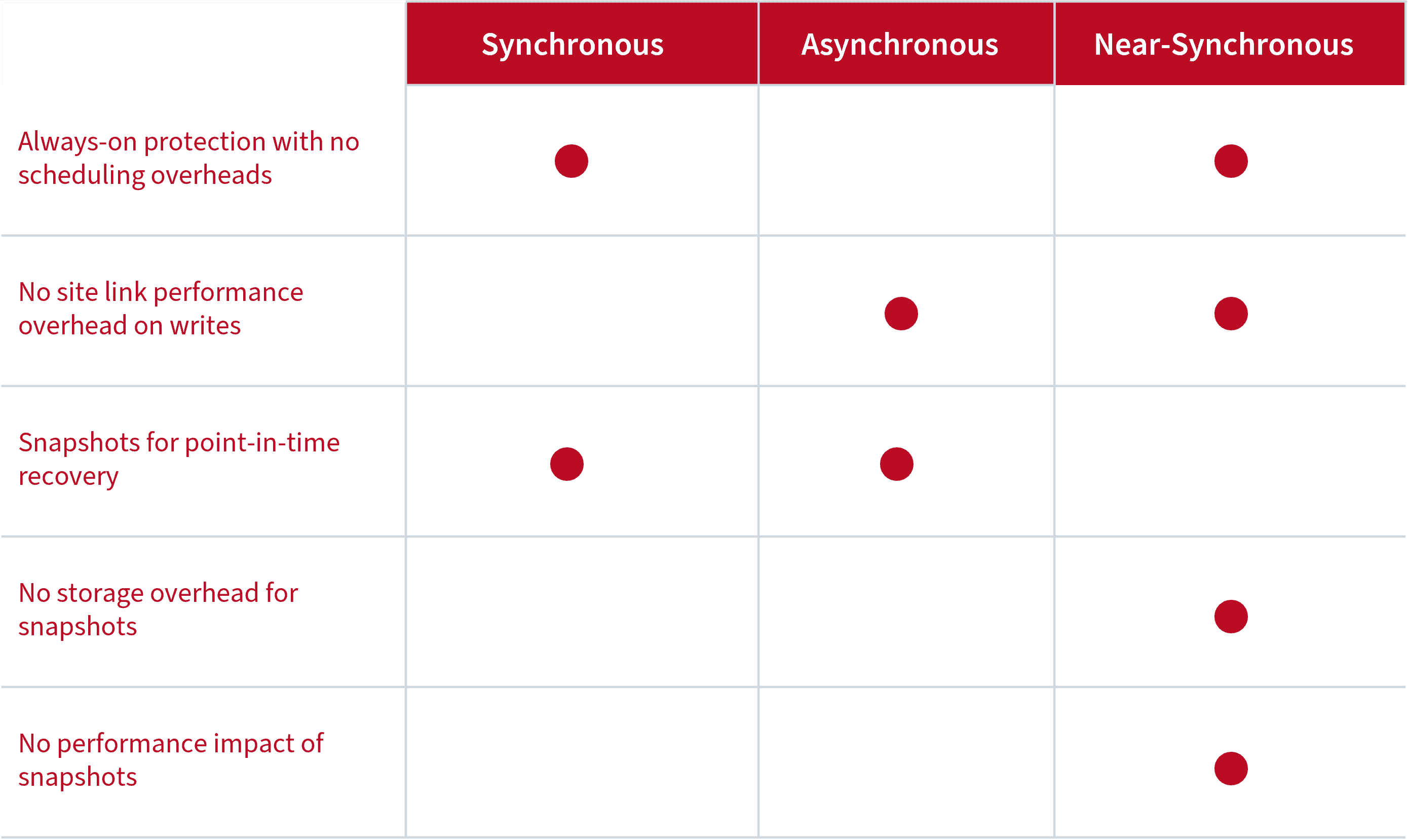
DR 101: Synchronous, A-Synchronous and Near-Synchronous Replication Technologies (Updated on February 2023)
When it comes to data storage and management, replication is a common technique used to ensure availability and protection. Data replication involves creating copies of data and storing them in multiple locations so that they can be accessed even if one of the storage locations fails or becomes unavailable. This makes it a primary technology for disaster recovery, where data is replicated from your primary site to at least one remote secondary site, whether it is in a co-location —company-owned or through a service provider— or in the cloud.
There are three main types of data replications: synchronous, asynchronous, and near-synchronous replication. Each type has its own set of advantages and disadvantages, and the best choice for a given situation depends on the specific needs and goals of the organization. I will explain each of the different types of data replication and reveal some characteristics of each that you may not be aware of to help you choose the best replication technology for protecting and recovering your data.
Synchronous Replication
Synchronous replication writes data to multiple storage locations at the same time. This ensures that all copies of the data are kept up-to-date and consistent with one another. The source storage is simultaneously written in the target storage and acknowledgment from both storage arrays completes the operation. Matching storage between source and target with fibre channel latencies minimize the performance overhead of the link between the storage arrays. But, because of the potential for performance impact, synchronous replication should only ever be performed in the storage layer and not performed by a virtual appliance technology.
One of the main advantages of synchronous replication is that it provides the highest level of data availability and protection. Since the data is written to multiple locations at the same time, there is little risk of data loss in the event of a failure or outage.
However, synchronous replication also has some disadvantages. One of the main drawbacks is that it can be slower than other types of replication due to the need to write the data to multiple locations simultaneously. This can be especially problematic in situations where the storage locations are geographically distant from one another, as the data must be transmitted over longer distances.
Additionally, synchronous replication may not be a practical option for organizations with large amounts of data or high write loads, as the overhead cost of writing the data to multiple locations simultaneously can be too great.
Asynchronous Replication
Asynchronous replication, on the other hand, is a type of replication in which data is written to a primary storage location and then copied to one or more secondary locations at a later time. This means that the copies of the data may not be completely up-to-date and consistent with one another.
Asynchronous replication uses snapshots to take a point-in-time copy of the data that has changed and sends it to the recovery site on a schedule. The frequency is typically set on a schedule of every few hours, depending on the number and frequency of snapshots that the storage and application can withstand. Asynchronous replication can be performed by the storage array or by using a VM-level technology, but with storage-based replication being the most predominant, the focus will be on this type of replication for comparison.
One of the main advantages of asynchronous replication is that it is generally faster than synchronous replication, as the data only needs to be written to a single location initially. This can be especially useful for organizations with high write loads or large amounts of data.
One of the main drawbacks of asynchronous replication is that there is a higher risk of data loss, as the copies of the data may not be completely up to date. In the event of a failure or outage, it is possible that some of the data may not have been copied to the secondary locations yet and may be lost.
Near-Synchronous Replication
Near-synchronous replication is a type of replication that combines the best aspects of synchronous and asynchronous replication. It is similar to synchronous replication in that data is written to multiple locations at the same time, but it allows for a small delay between the primary and secondary locations.
Near-synchronous replication is always-on and constantly replicating only the changed data to the recovery site within seconds. Because it is always on, it does not need to be scheduled, doesn’t use snapshots, writes to the source storage, and doesn’t have to wait for acknowledgment from the target storage. In the table below, I will use the near-synchronous, hypervisor-based replication of Zerto for comparison.
One of the main advantages of near-synchronous replication is that it provides a high level of data availability and protection, while still allowing for faster write speeds than synchronous replication. This makes it a good choice for organizations with high write loads and/or large amounts of data.
Additionally, near-synchronous replication can be a good option for organizations that need to balance the need for data availability and protection with the need for fast write speeds.
Synchronous vs. Asynchronous vs. Near-Synchronous Replication: Main Differences at Once
To help you understand the most appropriate replication technology, review the table below to clearly explains the features and limitations of each method. Storage-based replication is used as a basis for synchronous and asynchronous replication, whereas Zerto hypervisor-based replication is used for this comparison.
Networking
Data Loss & Recovery
Performance & Sanpshots
*Subject to the frequency on which the application can quiesce writes to disk without the overhead of utilizing snapshots.
In conclusion, synchronous, asynchronous, and near-synchronous replication each has its own set of advantages and disadvantages. Each data replication technology has different attributes and depending on the requirements of your workloads and service level agreements, you can use the replication method that best meets your business requirements.
Become even more knowledgeable with our Disaster Recovery Essential Guide!




 Kyleigh FItzgerald
Kyleigh FItzgerald 

